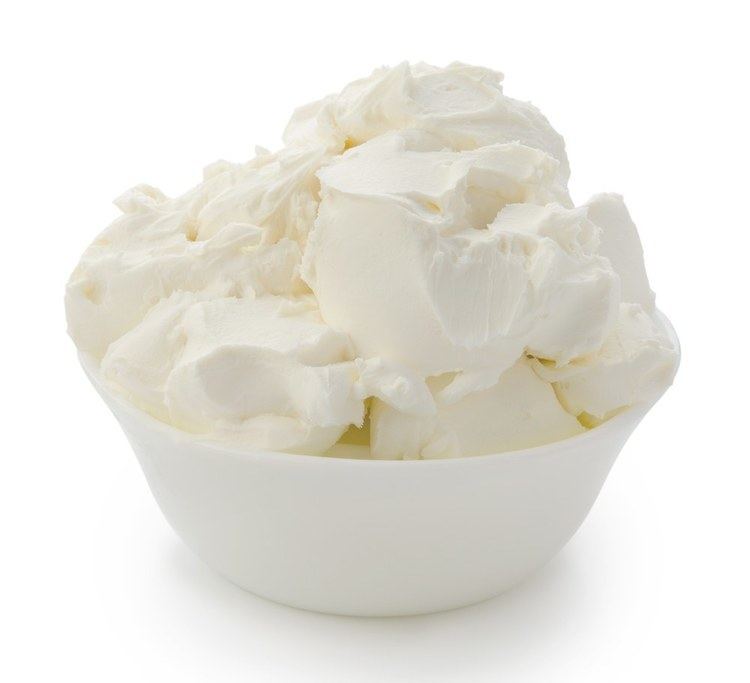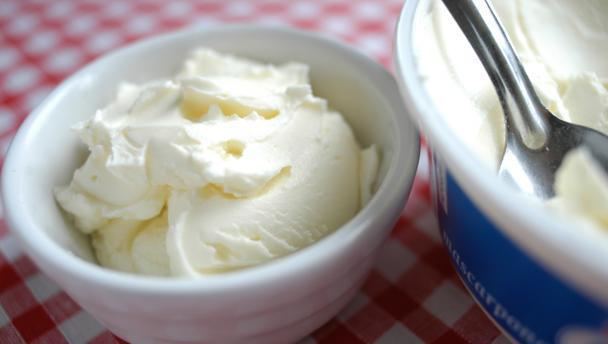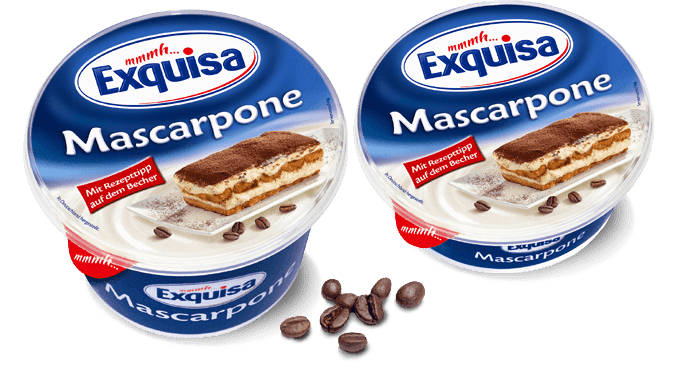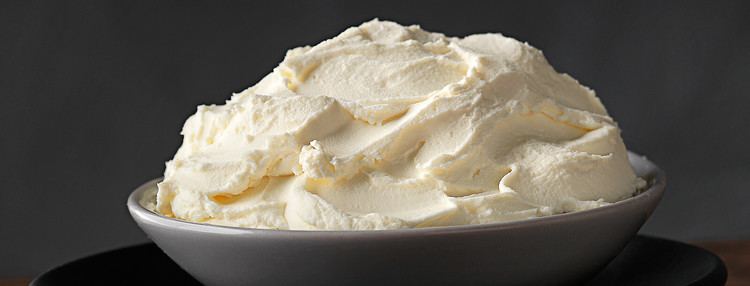Texture Spreadable Source of milk Milk | Aging Fresh | |
 | ||
Similar Tiramisu, Cheese, Ricotta, Ladyfinger, Cheesecake | ||
How to make mascarpone cheese
Mascarpone (/ˌmæskɑːrˈpoʊniː/, or /ˈmɑːskərpoʊn/; [maskarˈpoːne]) is an Italian cream cheese coagulated by the addition of certain acidic substances such as lemon juice, vinegar, citric acid or acetic acid. It is recognized as a Prodotto agroalimentare tradizionale (traditional regional food product).
Contents

Homemade mascarpone cream cheese
Production process

After denaturation, the whey is removed without pressing or aging. Mascarpone may also be made using cream and the residual tartaric acid from the bottom or sides of barreled wine.

Mascarpone is milky-white in color and is easy to spread. It is used in various Lombardy dishes, and is considered a specialty in the region. It is one of the main ingredients in the modern Italian dessert known as tiramisu, and is sometimes used instead of butter or Parmesan cheese to thicken and enrich risotto. Mascarpone is also used to produce Italian cheesecakes.
Origins

Mascarpone originated in the area between Lodi and Abbiategrasso, Italy, southwest of Milan, probably in the late 16th or early 17th century. The name is popularly held to derive from mascarpa, an unrelated milk product made from the whey of stracchino (a young, barely aged cheese), or from mascarpia, a word in the local dialect for ricotta. Ricotta, unlike mascarpone, is made from whey.
